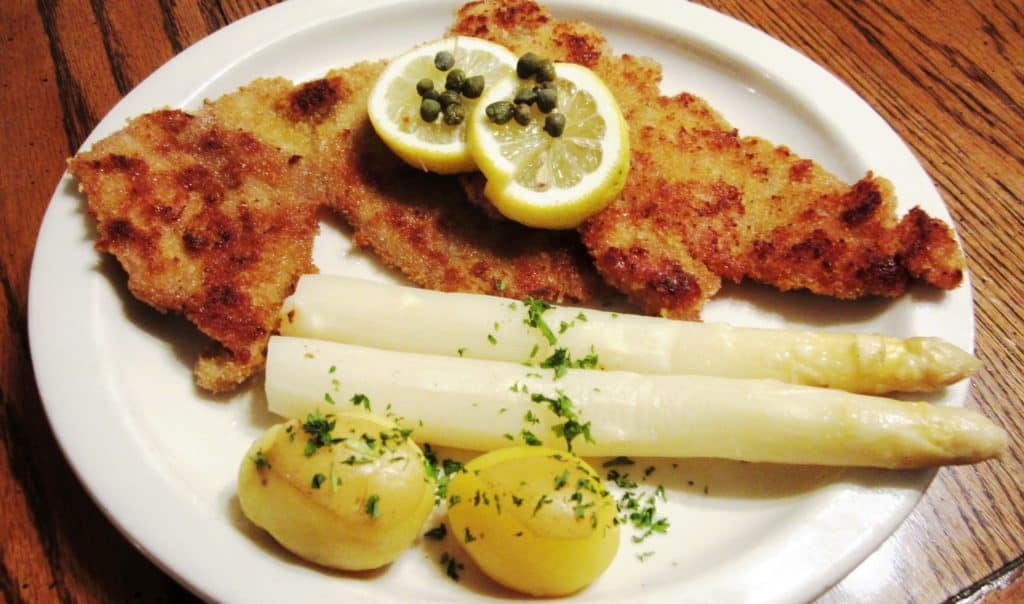
When you live in Germany, you will see people from the cities making pilgrimages into the countryside each spring to buy the Queen of vegetables from the farmers right off the field. In addition, they go out to eat the fresh white asparagus in the village Gasthäuser. The highlight of the season for many small villages is the annual “Spargelfest,” complete only with a large tent, where guests enjoy various different asparagus dishes, lots of Bier and a big formal evening dance to crown the “Spargel Königin,” the beautiful Queen of Asparagus for the village. People consider Asparagus a delicacy since Roman times. Traditionally, Spargel is harvested from Easter until St. Johannis Day, June 24. To harvest after this date kills the roots, as the plant cannot leaf out properly to make it through the heat of summer and to gain the strength for the next season. The old farmers say, “When the cherries get red, leave the asparagus in its bed” – a farmer who maintains the field of asparagus can harvest for about ten to twelve years.
To grow white asparagus, farmers plow the sandy soil of their fields to create a trench. Into this trench goes the straw from the animal stables accumulated through the winter and the new asparagus roots. Another trench to the left and the right is plowed with the soil covering the roots under a furrow about a foot and a half high. The farmers will firm up the furrow with shovels. Now they will weed the field for three long years, without taking any crop from it. Very early one morning in the fourth year, with the sun just rising, the farmers will be out to look for the asparagus heads breaking the soil.


With a special shaped slim knife, they dig into the furrow and cut the shoot about a foot below the surface. In the moment the shoots are exposed to sunlight, they will turn green or purple. The crop grows larger with a little rain during the evenings and nights, and warm and sunny days. Many “Spargelfreunde” will be driving through the growing areas – as early as 6:00 am, I have seen farmers that sold out by 7:30 am. During the season, most restaurants open their Bier Garten, and the feeling of the warm spring sun, the smell of the fresh asparagus and the happy crowd is just an essential part of describing the enjoyment of spring after a long and cold winter.
To get the fresh white asparagus home in top shape, we wrap it into a moist linen towel and place it into a wicker basket. We will save it in a dark and cool basement awaiting further attention. Within a few hours, we want to shave off the skin with a special extra sharp knife, take off the lower 1″, which tends to get woody – and finally, poach the “Spargel” in the special water. – Most people add their favorite amount of salt, sugar, lemon juice and butter. Of course, the marinade will be saved and is used to boil the skin and the feet – to serve as the base for a “Spargelcremesuppe” – the highest royalty in soups – a “must have starter” for every true Spargel lover. .


Weisser Spargel should be poached just beyond the “al dente,” that allows a spear to bend at a smooth angle over a fork. Most restaurants and “Gasthäuser” will offer a “Fresh pound,” which is a whole pound prior to skinning and trimming. Traditional compliments include new, young spring potatoes and drawn butter or a buttery sauce, like the Hollandaise. These pictures come from the “Spargel” webpage celebrating the famous Bavarian Schrobenhausener Spargel growing area east of Augsburg and north of München and the Bavarian Grill kitchen.





